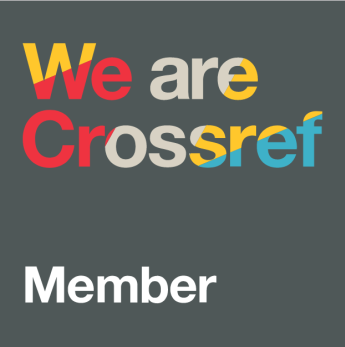Foodstagramming hyperreality in consumption behavior in Indonesia
DOI:
https://doi.org/10.21831/hsjpi.v7i1.28916Keywords:
Makan cantik, foodstagramming, hiperrealityAbstract
This research studies the foodstagramming phenomena that happened on most young people in Surakarta which has been the new lifestyle that causes hyperreality in social media. The purpose of this study was to know the motives behind the activities of foodstagramming done by Instagram users and their effects on the people's consumptive interest that impacted the hyperreality phenomenon on social media. The actions of foodstagramming are now widely popular since more cafés and restaurants are built-in Surakarta. Technology advancement has changed the eating culture, which in the past, it sees as a necessity fulfillment. Still, now it becomes the "˜mark' of what to expose to the public through simulation in social media that eventually forms fake realities, as mentioned by Jean Baudrillard as hyperreality. This study used the qualitative approach and phenomenology method to dig out the motives behind the Surakarta people's activities foodstagramming. The data collection techniques used were interviews, observation, and documentation from Instagram, news websites, and survey results about consumptive patterns and social media usage. The informant's criteria were Instagram users, such as cafés and restaurant consumers, entrepreneurs, and the café or restaurant workers. The data analysis technique was an interactive model data analysis by Miles and Huberman. The result showed that "˜Makan Cantik' and Foodstagramming were simulations that intentionally create to form a particular image to represent the social status and gain prestige. "˜Makan Cantik' and Foodstagramming were called hyperreality in social media where fake realities were exposed to be more real than the truth itself.References
Adiasih, P., & Brahmana, R. K. M. R. (2015). Persepsi terhadap makanan tradisional Jawa Timur: Studi awal terhadap mahasiswa perguruan tinggi swasta di Surabaya. KINERJA: Journal of Business and Economics, 19(2), 112-125. Doi: https://doi.org/10.24002/kinerja.v19i2.538
Andesta, D. (2018). Analisis Kebutuhan Anak Usia Dasar dan Implikasinya dalam Penyelenggaraan Pendidikan. JIP (Jurnal Ilmiah PGMI), 4(1), 83-97. Doi: https://doi.org/10.19109/jip.v4i1.2269
Anwar, F. (2017). Perubahan dan permasalahan media sosial. Jurnal Muara: Ilmu Sosial, Humaniora, dan Seni, 1(1), 137-144. Doi: https://doi.org/10.24912/jmishumsen.v1i1.343
Assegaf, S. (2017). Evaluasi pemanfaatan media sosial sebagai sarana knowledge sharing. Jurnal Manajemen Teknologi, 16(3). 271-293.
Atanasova, A. (2016). The psychology of foodstagramming. Retrieved from https://www.socialmediatoday.com/social-networks/psychology-foodstagramming
Azrimaidaliza, A., & Purnakarya, I. (2011). Analisis pemilihan makanan pada remaja di Kota Padang, Sumatera Barat. Kesmas: National Public Health Journal, 6(1), 17-22. Doi: http://dx.doi.org/10.21109/kesmas.v6i1.114
Baidhowi, B., & Zaki, I. (2014). Implementasi konsumsi Islami pada pengajar pondok pesantren (Studi kasus pada pengajar pondok pesantren Al-Aqobah Kecamatan Diwek Kabupaten Jombang). Jurnal Ekonomi Syariah: Ekonomi dan Terapan, 1(9), 610-621. Doi: http://dx.doi.org/10.20473/vol1iss20149pp%25p
Bergh, C. (2019). LS&Co.'s Chip Bergh: Why Business Leaders Need to Take a Stand on Gun Violence. Retrieved from https://www.levistrauss.com/2018/09/05/chip-bergh-take-stand-gun-violence/
CupoNation. (2018). Sosial media dan messenger di Indonesia. Retrieved from https://www.cuponation.co.id/magazin/indonesia-berada-pada-peringkat-ke-empat-pengguna-facebook-dan-instagram-terbanyak.
Demartoto, A. (2009). Kajian terhadap pemikiran postmodernisme jean baudrillard tentang realitas semu dalam masyarakat era simulasi. FISIP UNS: Surakarta.
Fitria, H. (2016). Hiperrealitas dalam sosial media (Studi kasus: makan cantik di Senopati pada masyarakat perkotaan). Informasi, 45(2), 91-98. Doi: https://doi.org/10.21831/informasi.v45i2.7985
Ilyas, R. (2016). Etika konsumsi dan kesejahteraan dalam perspektif ekonomi Islam. Jurnal At-Tawassuth: Jurnal Ekonomi Islam, 1(1), 152-172. Doi: http://dx.doi.org/10.30821/ajei.v1i1.367
Mufidah, N. L. (2012). Pola konsumsi masyarakat perkotaan: Studi deskriptif pemanfaatan foodcourt oleh keluarga. BioKultur, 1(2), 157-178.
Mulawarman, M., & Nurfitri, A. D. (2017). Perilaku pengguna media sosial beserta implikasinya ditinjau dari perspektif psikologi sosial terapan. Buletin Psikologi, 25(1), 36-44. Doi: http://dx.doi.org/10.22146/buletinpsikologi.22759
Rahman, N., Dwi, N. U., & Armawaty, F. (2016). Faktor-faktor yang berhubungan dengan perilaku makan pada remaja SMA Negeri 1 Palu. PREVENTIF: Jurnal Kesehatan Masyarakat, 1(7), 43-52.
Ritzer, G. (2003). Teori Sosial Postmodern. Kreasi Wacana: Yogyakarta.
Sada, H. J. (2017). Kebutuhan dasar manusia dalam perspektif pendidikan Islam. Jurnal Al-Tadzkiyyah: Jurnal Pendidikan Islam, 8(2), 213-226. Doi: https://doi.org/10.24042/atjpi.v8i2.2126
Sari, E., & Dwiarti, R. (2018). Pendekatan hierarki abraham maslow pada prestasi kerja karyawan PT. Madubaru (Pg Madukismo) Yogyakarta. Jurnal Perilaku dan Strategi Bisnis, 6(1), 58-77. Doi: https://doi.org/10.26486/jpsb.v6i1.421
Sarup, M. (2003). Post-structuralism and postmodernism. Jendela: Yogyakarta.
Solis, B. (2010). Engage: The complete guide for brands and businesses to build, cultivate, and measure success in the new web. Newark: Wiley.
Sufa, S. A. (2017). Tren gaya hidup sehat dan saluran komunikasi pelaku pola makan food combining. Jurnal Komunikasi Profesional, 1(7), 105-120.
Sugiyono, S. (2013). Memahami Penelitian Kualitatif. Bandung: Alfabeta.
Suhaeb, F. W., & Kahfi, M. A. (2017, February). Fenomena hiperrealitas masyarakat pada makanan. Paper presented at Seminar Nasional Pendidikan Ilmu-Ilmu Sosial Membentuk Karakter Bangsa dalam Rangka Daya Saing Global, Grand Clarion Hotel, Makassar.
Suryani, I. (2014). Pemanfaatan media sosial sebagai media pemasaran produk dan potensi Indonesia dalam upaya mendukung ASEAN Community 2015 (Studi social media marketing pada twitter Kemenparekraf RI dan Facebook DISPARBUD Provinsi Jawa Barat). Jurnal Komunikasi, 8(2), 123-138.
Watie, E. D. S. (2011). Komunikasi dan media sosial (Communications and social media). Jurnal The Messenger: Culture Studies, IMC and Media, 3(1), 69-75. Doi: http://dx.doi.org/10.26623/themessenger.v3i2.270
Widodo, D. R. (2015). Jajak pendapat, budaya unggah foto makanan. Litbang Kompas.
Downloads
Published
How to Cite
Issue
Section
License
The Authors submitting a manuscript do so on the understanding that if accepted for publication, copyright publishing of the article shall be assigned to Harmoni Sosial: Jurnal Pendidikan IPS
 | Harmoni Sosial: Jurnal Pendidikan IPS by http://journal.uny.ac.id/index.php/hsjpi is licensed under a Creative Commons Attribution-ShareAlike 4.0 International License. |











